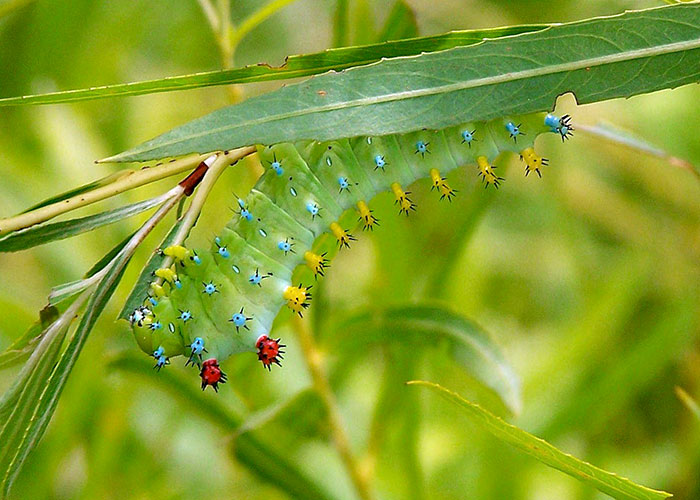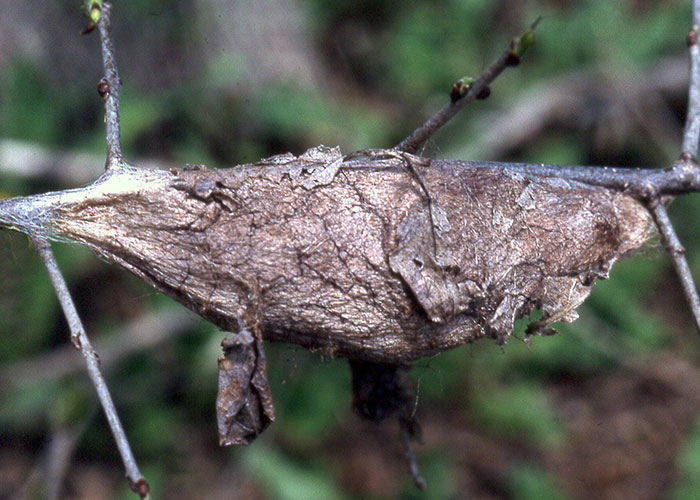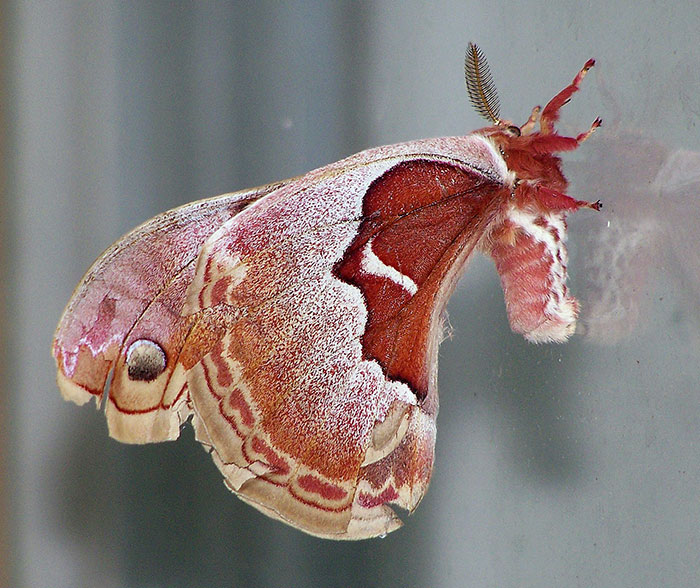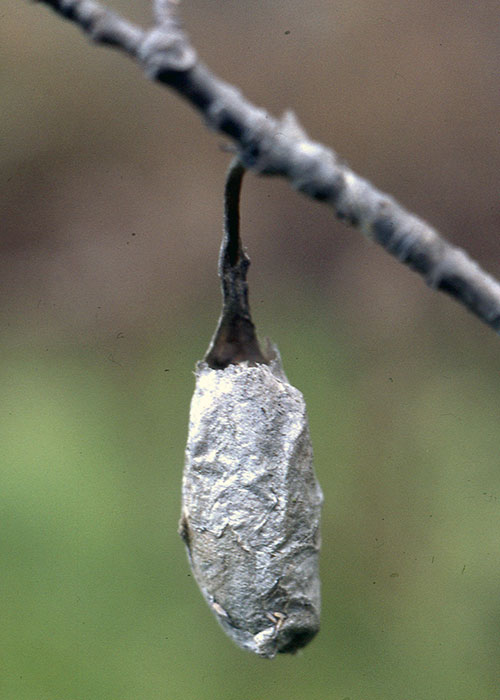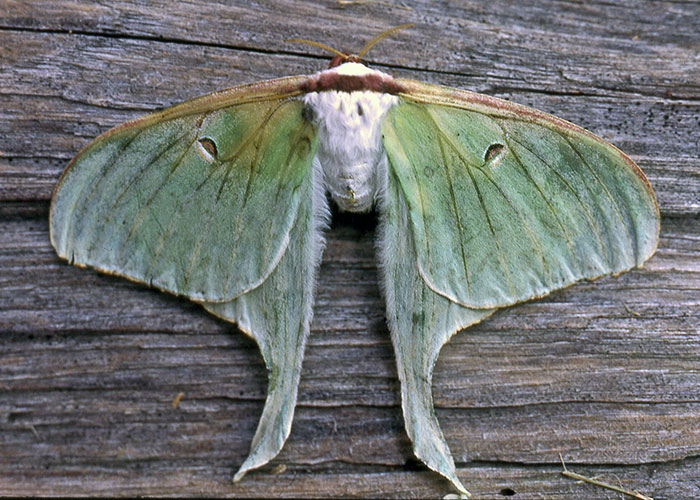Salutations, BugFans,
Back when the BugLady was a nymph (wait, that doesn’t sound quite right)…. Back in high school, when the BugLady was in an earlier instar, a friend found a Cecropia moth laying eggs and gave the BugLady a twig with 9 tiny, pale eggs on it. The eggs hatched into tiny, black fuzzy caterpillars, and the BugLady kept their cage (a cylinder of screen fastened to a wood block and topped by more screen—it doesn’t have to be fancy) full of food and empty of frass (a reasonable housekeeping philosophy) and they grew and prospered. After a while she noticed that although food was not a limiting factor and escape was unlikely, the nose count was decreasing, and she suspects that the little buggers were cannibalizing each other. Ultimately, a single caterpillar remained, and it spun a cocoon, an illustration of Mother Nature’s First Law, Survival of the Fattest, and a small vignette in the life of a BugLady.
The Cecropia, Promethea, Polyphemus and the Luna are members of the Giant Silk Moth family or Saturnids, and some are giants indeed, measuring in the 4” to 6” range (some good Greek myths behind those names; dust off your old Edith Hamilton mythology book from freshman English and look ‘em up.). Saturnids are distantly related to the moth that is used in silk production, and some Asian and South American Saturnids are semi-domesticated and the silk spun by their larvae is harvested. North American silk moths aren’t used to make silk, although the BugLady has read that cocoons have been unraveled by people desperate for leaders for fishing line. The horrifically invasive gypsy moth, in the tussock moth family, was originally imported to test its feasibility as a silk producer.
Cecropia Caterpillar
A Cecropia caterpillar that starts off tiny and black eats a wide variety of tree leaves and grows up to be the size of your thumb, pale green, with Technicolor knobs. They can be easier to find by looking for frass (caterpillar poop) than by spotting the caterpillars themselves. The gray, spindle-shaped cocoon is spun on a branch or at the base of a tree trunk. Several layers of tough silk, with air spaces in between, insulate the pupa from abrupt temperature changes during its transformation – though a small bird or mammal might feed on it during winter.
Adult male and female Promethea moths exhibit strong sexual dimorphism—the male is dark brown and the female is reddish.
Promethea Caterpillars
Promethea caterpillars bear a family resemblance to Cecropias (but lack the row of paired, plain yellow knobs) and also eat lilac and forest trees like ash, cherry and magnolia, although populations may become food specialists, regionally. Promethea caterpillars spin cocoons inside leaves that they glue to their food plants and then fold around themselves. The “inside-the-leaf” part is a good camouflage strategy; the “only-leaf-left-glued-on-the-tree” part, not so much.
Luna Caterpillars
The bizarre reddish caterpillar is the normally chartreuse caterpillar of the exquisite Luna Moth. It was captured halfway between a hickory tree that it probably spent its caterpillar-hood in, and a thicket where it intended to pupate. The BugLady guesses it was so close to pupating that it was undergoing internal changes that altered its color.
[metaslider id=7177]
The females emit pheromones, air-borne odors that the males, using their large, feathery antennae, can detect in minuscule concentrations up to three miles away. Adult silk moths in North America have greatly reduced mouthparts and do not feed; but they are fed upon. Screech owls and bats score a seven course meal when they catch a giant silk moth.
Caterpillars and cocoons are dynamite tools for teaching kids about Nature, but the landlord (you) has certain responsibilities:
- Do your homework—identify what species of caterpillar you have, know what its larval food is, and provide a fresh supply daily. Caterpillars are notoriously picky eaters and will starve to death surrounded by the wrong food;
- Make sure the cage is roomy. Think of a moth with a 4+ inch wingspan pumping up and flapping its wings (the BugLady has seen butterflies and moths that did not have enough room to stretch as their wings solidified). Make sure the top is large. The moth with the 4+ inch wingspan also has to be able to exit the cage;
- Keep the cage and cocoon at outside temperatures over the winter, and remember to check on it very frequently in spring (If you are likely to forget it, leave the top off). At indoor temperatures, the moths will emerge earlier, when there are no other moths around to (wink, wink, nudge, nudge) play with.
The BugLady
